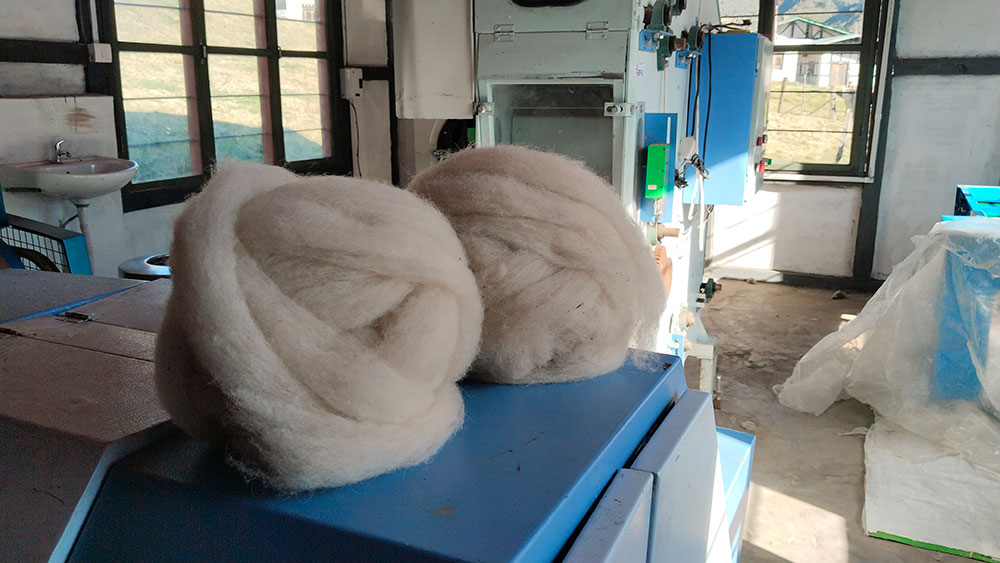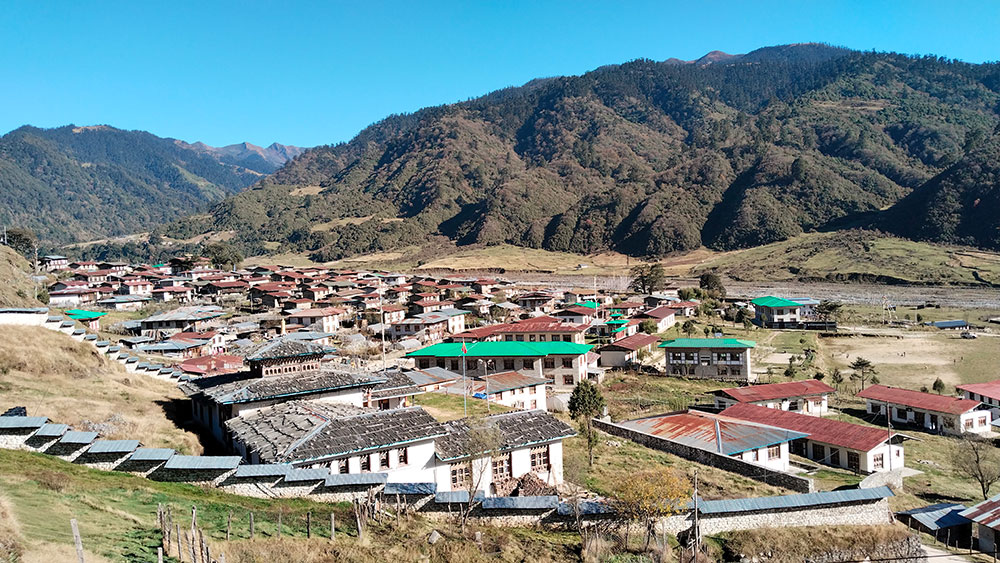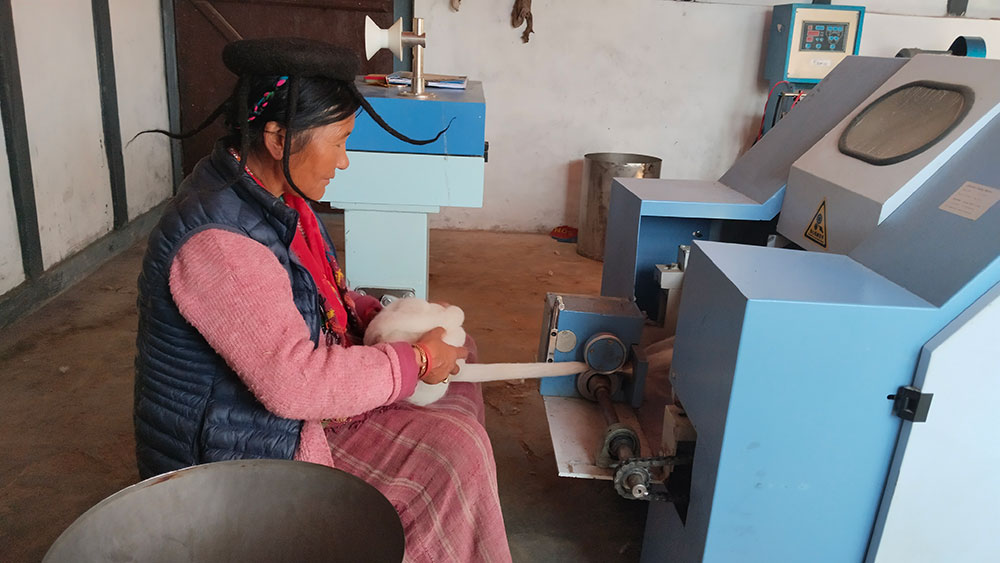Neten Dorji
Sakteng, Trashigang—It is late morning in the highland settlement of Sakteng and the winter’s chill has already set in.
“It will only get colder by the day,” says Yuden Mo, a 59-year-old, who is busy at her handloom, skilfully weaving intricate motifs on a traditional dress she is weaving—an age-old tradition.
For generations, women like Yuden Mo have relied on handmade spindles and brushes to turn wool into yarn, a labour-intensive process that could take up to six days for just one kilogramme of wool. However, the establishment of a wool processing centre in the village is changing her routine — and that of many others.
Today, the wool processing centre has made the task so much easier. Manual methods have been replaced with modern machines like carding, de-watering, and drying.


“The machine has made life easier for us. What used to take days now takes just an hour,” says Yuden Mo.
Wool is the main raw material for traditional dress such as teodung, chuba, and zhamu of Sakteng and other Brokpa communities. The brokpa women typically wear red and white silk ponchos, red silk jackets decorated with animal designs, and red wool capes. The men wear leather or cloth pants under large, white trousers, red wool jackets, and sometimes sleeveless outer garments made of leather.
The dwindling number of sheep, exacerbated by increasing predator attacks, led to a wool shortage that threatened this cultural heritage. In fact, many brokpas were on the verge of given up sheep farming.
Taomo, 46, one of the few who can weave a tsuk-tu (blanket) says wool has become a scarcity due to declining number of sheep in the village. “Consequently, the practice of weaving is on the wane.”
Another highlander, Dawa, recalls how their once-thriving sheep population has dwindled dramatically. “We used to have at least 300 sheep, but today, except for a few yaks, I don’t have a single sheep,” she says. “Most of our outfits require wool from sheep. With the numbers decreasing, it is difficult to weave like we used to in the past.”
Rinchen Dorji has only six sheep. “Were it not for attacks by wild animals, I would have about 30 sheep by now, probably even more,” he says.
There was a time when each household in the village owned a flock of more than 60 sheep. “These days, we barely have enough wool to produce traditional fabrics,” says Rinchen Dorji.
The establishment of the centre has revived interest in rearing sheep-a timely solution for a pressing issue.
The brokpas of Sakteng today buy wool from Merak and Tawang in Arunachal Pradesh, India.
Leki Dema from Tengma village says that the centre has encouraged people to raise sheep again, helping to conserve traditional dress and supporting local livelihoods.
Sakteng Gup, Tshewang Tshering, is optimistic. “The government and the Tarayana Foundation have provided sheep to families without livestock,” he says. “Moreover, with the new machinery in place, I am optimistic that more people will start rearing sheep next year.”


